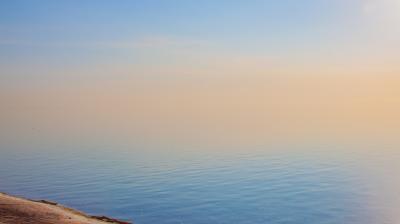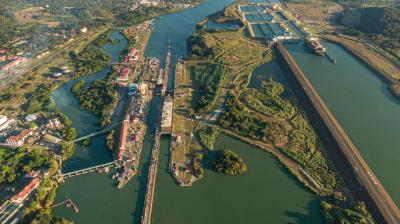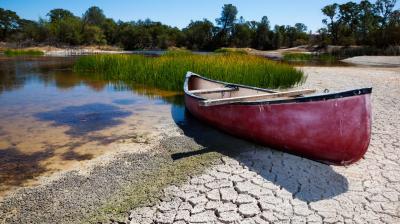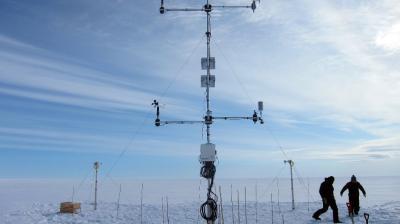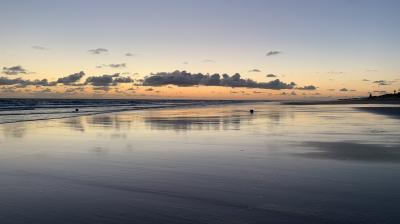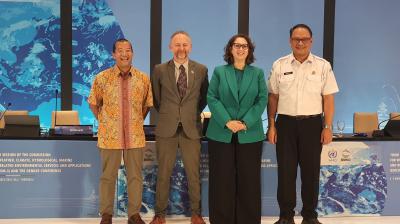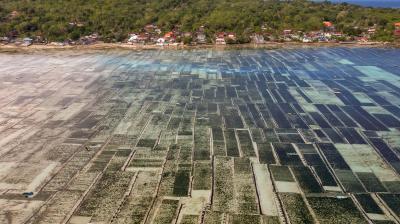Arctic Report Card confirms climate change disruption
Climate change continues to disrupt the Arctic, with the second-highest air temperatures and second-lowest summer sea ice driving a cascade of impacts, including the loss of snow and extraordinary wildfires in northern Russia in 2020.

Climate change continues to disrupt the Arctic, with the second-highest air temperatures and second-lowest summer sea ice driving a cascade of impacts, including the loss of snow and extraordinary wildfires in northern Russia in 2020.
This is according to NOAA’s 15th Arctic Report Card, a compilation of original, peer-reviewed environmental observations and analyses by 133 scientists from 15 countries.
The sustained transformation to a warmer, less frozen and biologically changed Arctic remains clear, it concluded.
"Nearly everything in the Arctic, from ice and snow to human activity, is changing so quickly that there's really no reason to think that, in 30 years, much of anything will be as it is today" said Rick Thoman, one of the editors of the Arctic Report Card, which was released during a virtual press conference hosted by the American Geophysical Union as part of its autumn meeting.
The Arctic Report Card provides annual updates on seven topics: Surface Air Temperature; Terrestrial Snow Cover; Greenland Ice Sheet; Sea Ice; Sea Surface Temperature; Arctic Ocean Primary Productivity; and Tundra Greenness.
The Arctic is heating more than twice as fast as the global average, with far-reaching impacts for weather and climate patterns in the rest of the world.
According to WMO’s provisional report on the State of the Global Climate, 2020 is set to be one of the three warmest years on record, with the most notable warmth being observed in the Siberian Arctic, where temperatures were more than 5 °C above average. Siberian heat culminated on 20 June, when it reached 38.0 °C at Verkhoyansk, provisionally the highest known temperature anywhere north of the Arctic Circle. This fuelled the most active wildfire season in an 18-year-long data record, as estimated in terms of CO2 emissions released from fires.
Key Arctic Report Card findings include:
In the oceans
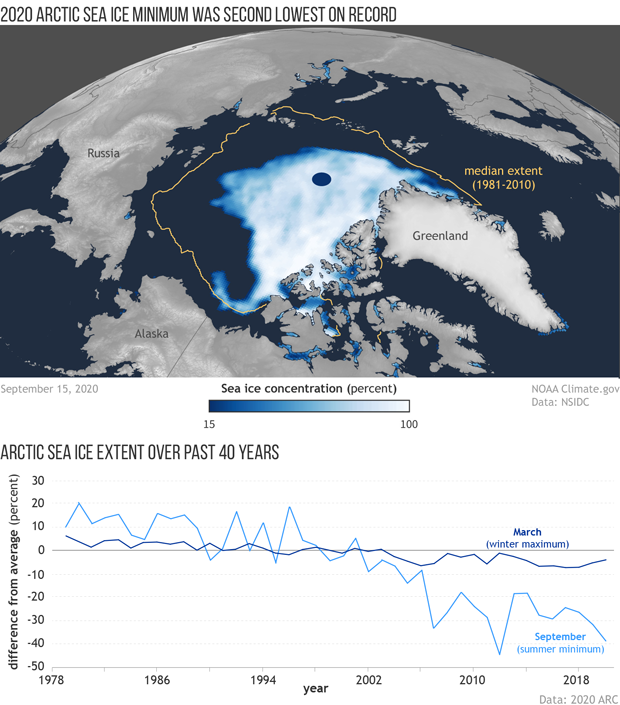
August mean sea surface temperatures in 2020 were ~1-3°C warmer than the 1982-2010 August mean over most of the Arctic Ocean, with exceptionally warm temperatures in the Laptev and Kara seas that coincided with the early loss of sea ice in this region.
During July and August 2020, regional ocean primary productivity in the Laptev Sea was ~2 times higher for July and ~6 times higher for August compared to their respective monthly averages.
Bowhead whales have been a staple resource for coastal Indigenous peoples for millennia and are uniquely adapted for the arctic marine ecosystem. The Pacific Arctic population size has increased in the past 30 years likely due to increases in ocean primary production and northward transport of the zooplankton they feed on.
Shifts in air temperatures, storminess, sea ice and ocean conditions have combined to increase coastal permafrost erosion rates, in regions where a high proportion of Arctic residents live and industrial, commercial, tourist and military activities are expanding.
On the land
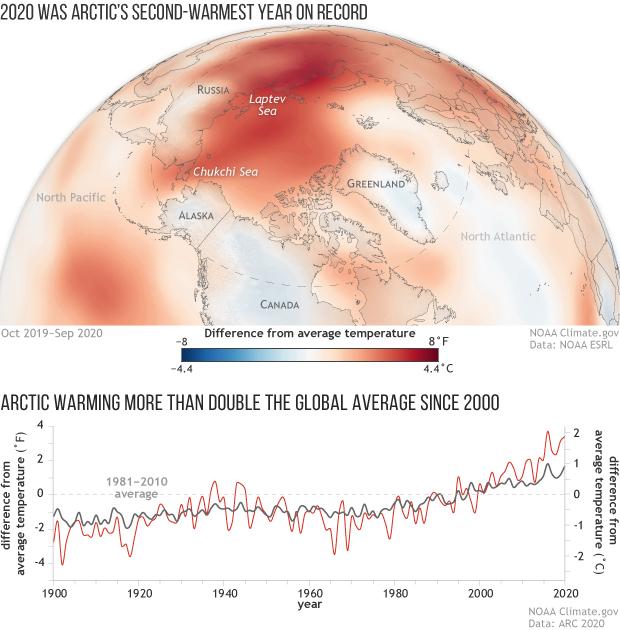
Nine of the past 10 years saw air temperatures at least 1°C above (2.2°F) the 1981-2010 mean. Arctic temperatures for the past six years have all exceeded previous records.
The exceptional warm spring air temperatures across Siberia resulted in record low June snow cover extent across the Eurasian Arctic, as observed in the past 54 years.
Extreme wildfires in 2020 in the Sakha Republic of northern Russia coincided with unparalleled warm air temperatures and record snow loss in the region.
Since 2016, tundra greenness trends have diverged strongly by continent, declining sharply in North America but remaining above the long-term average in Eurasia.
From September 2019 to August 2020, the Greenland Ice Sheet experienced higher ice loss than the 1981-2010 average but substantially lower than the record 2018/19 loss.
Glaciers and ice sheets outside of Greenland have continued a trend of significant ice loss, dominated largely by ice loss from Alaska and Arctic Canada.
Observing Arctic change
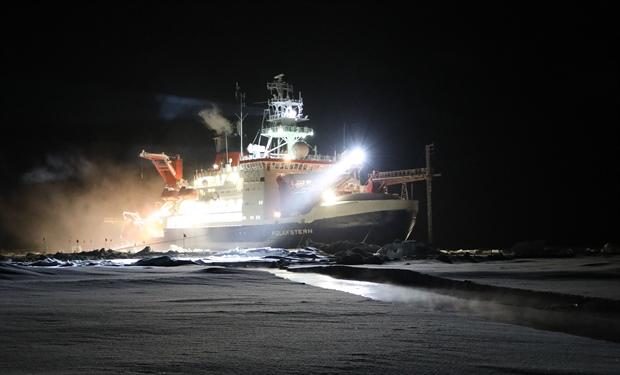
Important additions to the Arctic Observing Network (AON) systems and data products and advancements in process-level understanding have improved the quality and accessibility of information used to produce the Arctic Report Card.
The unique Multidisciplinary drifting Observatory for the Study of Arctic Climate (MOSAiC) project concluded a historic, international, yearlong expedition into the Arctic ice pack in September 2020, collecting a legacy dataset that aims to advance the understanding, modeling and predicting of Arctic environmental change. The expedition based from the Polarstern icebreaker in the central Arctic Ocean, drifted much faster than anticipated through thinner ice than expected, experiencing sea ice dynamics that complicated the scientific mission.
Opening of the new NOAA Barrow Observatory, near Utqiaġvik, Alaska, enables the continuation of nearly half a century of atmosphere and terrestrial in situ observations.
- WMO Member:
- United States of America


